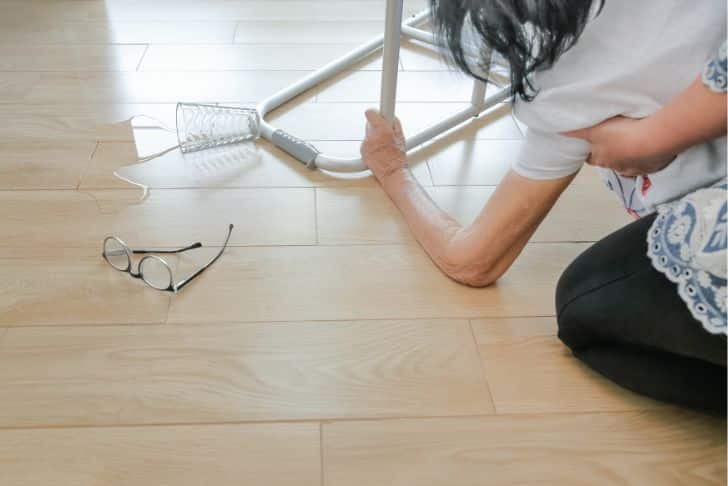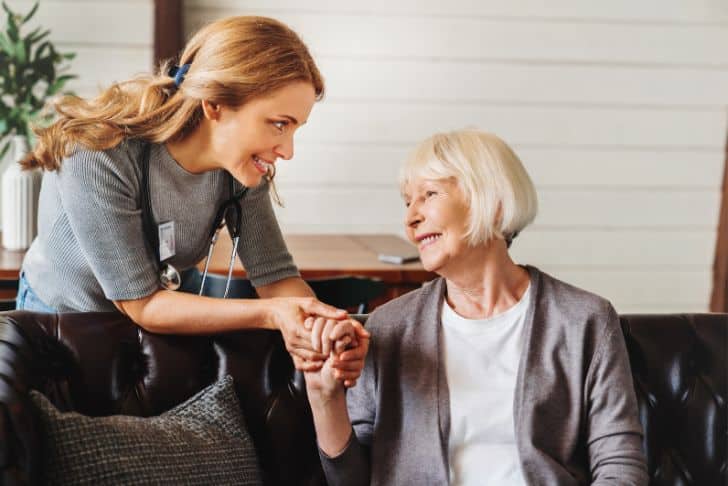In this article, Effective Balance and Strength Exercises: Fall Prevention, you’ll learn about the growing concern of falls among adults aged 65 or older – every year, the Centers for Disease Control and Prevention records more than 25 percent of these adults experiencing a fall. Various factors may contribute to this issue, such as balance problems, multiple medications, home hazards, blood pressure concerns, and more. But worry no more, as the focus of this article pivots towards offering a potential solution to this vital health problem. Highlighting the expert advice of Johns Hopkins Rehabilitation Network’s physical therapist, Lora Stutzman, the piece offers you a series of carefully curated exercises. These strength and balance-enhancing exercises are designed to help older adults feel more sturdy when performing basic daily activities, thus reducing the risk of falls.

Understanding the Danger of Falls Among Older Adults
Hello there! Have you ever wondered why falls are more common and critical for adults aged 65 and up? Here, let’s explore this subject, getting an understanding of the prevalence of falls in this age group as well as the profound consequences that can result from these incidents.
The prevalence of falls in adults 65 and older
Did you know that each year more than 25% of adults aged over 65 have falls? It’s true. The Centers for Disease Control and Prevention also note that as many as 3 million older adults are treated in emergency departments for fall-related injuries annually. It’s eye-opening data like this that illuminates the serious risk falls present for our beloved elders.
The serious consequences of falls in this age group
Now, you might think falling is not such a big deal as it can be a common occurrence for everyone, regardless of age. However, the ramifications of falls among older adults can be quite severe. Beyond painful bruising, these falls can lead to fractures, head injuries, and even increased fear of falling that could cause a decrease in the individual’s physical activity and mobility.
Risk factors for falls including balance or walking issues, multiple medications, home hazards, and low blood pressure
That’s why it’s crucial to recognize the common risk factors related to falls in older adults. Balance or walking problems, which can result from vision changes, vestibular issues, or altered sensation in feet, can increase fall risks. In addition, the use of multiple medications is a factor: studies have shown that people taking five or more medicines experience a higher risk of falling. Moreover, hazards in the home (dim lighting, trip hazards) can put older individuals in danger, as can positional low blood pressure when the blood pressure drops upon standing.
Reducing Falls through Exercise
Although it’s impossible to wholly eliminate the risk of falls, there are strategies that can help lower the chances significantly. One of the most beneficial approaches is through exercise.
Overview of how exercises can reduce fall risks
Now, how exactly can exercises help? Regular physical activity can enhance the overall strength and stamina of an individual, which plays a vital role in reducing the risk of falls. Specific exercises can also work toward improving balance, coordination, and flexibility, all factors that can help in avoiding accidental falls.
The link between improved balance, increased strength, and fall prevention
The connection between exercise and falls in the elderly may seem a bit abstract, but it’s actually quite clear. The ability of an individual to prevent falls largely depends on the body’s strength and balance. Regular exercise like strength training can increase muscle power, while balance exercises can help seniors maintain stability. Together, they create a powerful defense against falls.
Importance of doctor consultation before starting a new exercise regiment
One essential point to remember is that before immersing yourself or your loved one in a new exercise regimen, it’s paramount to consult with a healthcare professional. They can provide safe and appropriate exercise recommendations, highlighting the types and amount of exercise beneficial for each individual’s situation.
Sit-to-Stand Exercise
Among the various types of exercises that can support fall prevention, the sit-to-stand exercise is one of the most effective. This exercise primarily targets the leg muscles and helps in enhancing body mechanics and balance.
Overview of sit-to-stand exercise and its benefits
The sit-to-stand exercise is essentially moving from a seated position to a standing one. This activity strengthens the muscles in your lower body, helping you maintain balance when you stand up, walk, or climb stairs – all actions that lower the risk of falling.
Detailed steps to perform the sit-to-stand correctly
Performing the sit-to-stand exercise is simple. First, sit on the edge of a sturdy, standard-height chair with your feet flat on the ground. Lean your chest forward over your toes, shifting your body weight forward. Then, squeezing your gluteal muscles, rise to a standing position slowly. To conclude, slowly sit back down and repeat ten times.
How to progress and advanced variations of the exercise
Progress with this exercise can be gradual. When you’re comfortable standing up and sitting down without using your hands for aid, you can add hand weights for resistance. But remember, if you feel any discomfort in your knees, back, or hips, stop the exercise and speak to your doctor or physical therapist.
Balance Exercises
Along with the sit-to-stand exercise, here are some balance exercises that can significantly help in combating fall risk.
Introduction to balance exercises
Balance exercises aim to stabilize your body and reduce the risk of falls. They make your legs stronger and train your body to control where you place your body weight. Plus, they are simple and can be done at home.
Detailed steps for various balance exercises (feet apart, feet together, one foot, eyes closed)
There are various types of balance exercises. Start by standing with feet apart, holding for up to 30 seconds without support. Once you get the hang of it, make it harder: stand with feet together, stand on one foot, and even try with your eyes closed, each time building up to holding the position for 30 seconds. These exercises can help improve the steadiness of your walk.
Gradual progression and goal setting
Remember, it’s all about gradual progress. As you get better, increase the hold time before moving to the next exercise. Start by aiming for ten seconds and work up to holding for thirty seconds.

Additional Steps in Fall Prevention
Besides exercise, there are additional tasks you can employ in your journey towards fall prevention.
The role of regular doctor consultations in fall prevention
Routine consultations with a doctor play a crucial part in preventing falls. Regular check-ups can help doctors monitor any changes in your health, prescribe the correct medications if needed, and provide personalized advice for your lifestyle.
The importance of reporting any falls to one’s doctor
However minor a fall may seem, it is absolutely vital to report it to your doctor. This information helps them assess whether further tests are necessary and allows them to update your fall prevention plan.
Creating a safe home environment and how to do a home safety check
A safe home environment significantly decreases fall risk, so consider doing a home safety check. Remove potential tripping hazards like loose rugs, ensure the house has proper lighting, and install handrails in places like the stairs and bathroom.
Finding a Physician Specialising in Fall Prevention
Choosing the right medical professional for this journey is paramount. A physician specializing in geriatric medicine, sports injuries, and similar fields can provide expert consultation.
The importance of appropriate medical guidance
Appropriate medical guidance is essential because older adults have unique healthcare needs. Fall prevention is one vital area where specialized expertise can be the difference between thriving in old age and suffering unfortunate incidents.
How to find a specialized medical professional
Finding a specialist may seem daunting, but it absolutely doesn’t have to be. Start by discussing it with your primary care doctor – they can refer you to specialists they trust. You might want to consider professionals at reputable institutions or those with good patient reviews.

Exercising with Supervision
While regular exercise is critical for fall prevention, safety should always be your top priority.
Why it is important to have company during exercises
Having company when doing your exercises not only makes the activity more enjoyable, but it also provides a layer of safety. This person can assist if you struggle with an exercise or if there is an unexpected accident.
Options for exercising with company
Having a family member or friend join you can be lovely. Alternatively, consider engaging a fitness professional who can concurrently supervise and instruct, ensuring your safety and the effectiveness of the exercise routine.
Medication and Fall Risks
Let’s look at another factor contributing to fall risk among older adults, and that is medication.
The link between some medications and increased risk of falls
Did you know certain medicines can increase the likelihood of falls? Yes, medications such as sedatives, antidepressants, or even over-the-counter drugs can sometimes affect balance and coordination, making you more prone to falls.
The importance of discussing medications with a healthcare professional
Given the possible risks, it is crucial to discuss your medications with your healthcare provider. They can review any potential fall risks and adjust your medication regimen if necessary, ensuring your treatment remains safe and effective.
Footwear and Fall Risks
The role of footwear in fall prevention is often overlooked, but it plays a pivotal part in ensuring stability and safety.
Why the right footwear is essential for fall prevention
Footwear supports your entire body weight and directly influences your gait and balance. The wrong footwear can make walking difficult or uncomfortable and significantly increase the risk of trips or slips.
What to consider when choosing footwear
When choosing footwear, look for non-slip soles, a sturdy back, a good fit, and avoid high heels or floppy slippers. Comfort and safety should be your main concerns in finding footwear that helps avoid falls.
Other Factors that Contribute to Falls
Apart from those mentioned, some other factors also contribute to falls.
Vision changes and their effect on balance
Changes in vision can affect depth perception and focus, making it difficult to judge distances or see obstacles—conditions ripe for an unexpected fall.
Vestibular problems (inner ear disorders) and how they impact fall risks
Vestibular problems or inner ear disorders can disrupt balance, leading to a higher probability of falling.
Altered sensations in feet and their contribution to falls
Finally, changes in sensations in the feet can reduce our ability to accurately gauge the surface we’re walking on, increasing the risk of slips and falls.
So there you have it: a comprehensive look into the risks, preventative techniques, and numerous exercises older adults can use to counter fall risk. The key takeaway here is that, while aging does bring challenges, there are many proactive steps we can take to ensure we navigate these years safely and happily.
